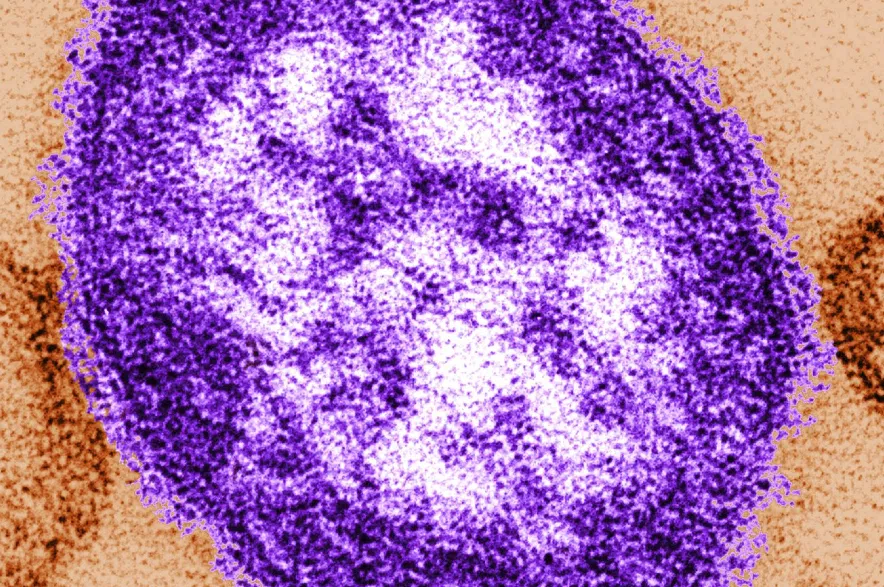WINKLER — Public health officials in Manitoba are warning of new measles exposure sites in two communities south of Winnipeg, including a medical centre and an elementary school.
Officials say people may have been exposed to the virus at the C. W. Wiebe Medical Centre and the Dynacare blood and medical test lab in Winkler, Man. on April 24, 25 and 29.
Read more:
- Small-town mayors ‘excited’ Pierre Poilievre targeting seat in rural Alberta
- Alberta’s New Democrats to vote on opting out of federal party membership
Additional exposures may have occurred at the Winners in Winkler on the evening of April 27, and at Gretna School in Gretna, Man. between April 22 and 24.
Both communities are located about 100 kilometres southwest of Winnipeg, near the United States border.
Public health officials are communicating with the school and medical centre to notify staff, volunteers and families of students who may have been present, and say people should monitor symptoms for three weeks after a possible exposure.
They’re also asking anyone who thinks they may have been exposed but hasn’t been notified to contact Health Links-Info Santé.
There have been 10 confirmed and four probable cases of measles in Manitoba since February, according to provincial data up to April 26.
Measles outbreaks have been confirmed across Canada since last fall, with the vast majority of cases reported in Ontario and Alberta.
Ontario has reported 1,243 cases between Oct. 18, 2024 and April 29, 2025, while Alberta has confirmed 210 cases since the beginning of March.
Saskatchewan has reported 12 cases of measles in 2025 after only a single case in 2024 1 and no cases from 2020 to 2023.
What are the symptoms of measles?
The Saskatchewan Health Authority said that the symptoms of measles include fever, cough, runny nose, red eyes, fatigue, irritability (feeling cranky or in a bad mood), small, white spots (known as Koplik spots) inside the mouth and throat, and a red blotchy rash which develops on the face and spreads down the body about three to seven days after symptoms begin and can last four to seven days.
The SHA said anyone who has any of the listed symptoms and was at any of the listed locations during the identified times, should call HealthLine811, their primary care doctor or nurse practitioner.
Anyone in medical distress, should go to an emergency room or call 911, and identify they may have been exposed to measles.
The health authority also said that measles can be prevented by the safe, effective and free measles vaccine and with two doses, the vaccination is almost 100-per-cent effective
“Immunization is your best tool against measles, and two complete doses is what you need to have full vaccination. One dose is not enough,” the SHA’s Dr. David Torr said recently.
“Once immunized, the measles vaccine is extremely efficient, over 90 per cent of protection both against actually getting the infection and certainly against getting any complications or even death from measles.”
The second dose is especially important for people born in or after 1970.
Measles is spreading worldwide and the World Health Organization has expressed concerns.
“Get yourself up to date with the immunizations,” Torr said. “Otherwise you’re not properly protected against measles — and it is here.”
To check your vaccination records, Torr said to check MySaskHealthRecord, and if you can’t find anything there to contact public health.
Why is measles dangerous?
Measles is highly contagious and can spread very easily by breathing contaminated air after an infected person coughs or sneezes, or by touching a contaminated surface such as a doorknob or a shopping cart.
In rare cases can lead to respiratory failure, swelling of the brain and death.
If anyone breathes the contaminated air or touches a contaminated surface and then touches their nose, eyes or mouth, they can become infected.
The virus can live up to two hours in the air or on surfaces in a space where an infected person coughed or sneezed.
It can spread to others from four days before a rash appears until four days after a rash develops. Through this period, people need to stay in strict isolation to avoid spreading the infection.
Canada’s top doctor said recently she was concerned about measles outbreaks.
Dr. Theresa Tam says the majority of recent infections reported in Canada were among people who were unvaccinated, including many children, and infants under one.
A study published in the Canadian Journal of Public Health in October found a decline in measles vaccination coverage children ages two to seven before, during, and after the COVID-19 pandemic.
— with files from CKOM News
Read more:











